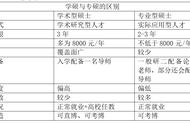● 名词定义noun
● 给物或人的一个称呼或命名就叫名词。比如人名、物名。单词是noun, 缩写为n.
● 名词分类及数量表示
● 可数名词及数量表示countable noun
● 可数名词单数
● 概念:能数清的名词,数量为1个,常用a/an/the修饰,也可以用序数词修饰。
● There is an apple on the desk. 桌上有一只苹果。
● This is my second trip to Guangzhou. 这是我第二次去广州的旅行。
● 可数名词复数
● 概念:能数清的名词,数量为2个或2个以上,除去用常见基数词修饰外,也可以用some, any, few, a few, many,量词短语修饰等
● I have two cats. 我有两只猫。
● 分类
● 常见可数名词单数变可数名词复数
● 规则变复数
● 一般直接加s: apple→apples; book→books
● 以x, s, ch, sh结尾加es(口诀:小四吃蛇): box→boxes; bus→buses; watch→watches; dish→dishes
● 以辅音 y结尾结尾去y为i再加es: party→parties; city→cities
● 以f或fe结尾去f或fe为v再加es: leaf→leaves; knife→knives
● 以o结尾,有生命的加es,无生命的加s
● 有生命以o结尾: hero→heroes; tomato→tomatoes; potato→potatoes(口诀: 英雄爱吃西红柿和土豆)
● 无生命以o结尾: radio→radios; piano→pianos; zoo→zoos; photo→photos(口诀: 收音机和钢琴去动物园拍照)
● 常见反规则:kangaroo复数为kangaroo或kangaroos; belief复数为beliefs; proof复数为proofs; roof复数为roofs; stomach复数为stomachs
● 常见不规则变复数
● 单复同形
● 常见: 中日羊鱼鹿 Chinese; Japanese; sheep; fish; deer
● 以oo变ee,以a变e
● 常见: tooth→teeth; foot→feet; goose→geese; woman→women; man→men
● 无单只复
● 常见: scissors; trousers; savings; earnings; greetings; winnings
● 形复名单
● 常见: maths; economics; politics; physics
● 其他特殊
● 常见: child→children; mouse→mice; ox→oxen; German→Germans; American→Americans; human→humans
● 复合名词变复数
● 一般直接在复合名词后边名词或其他词加s
● 女学生 girl students; 成年人 grown-ups
● 强调主体时,在主体名词后加s
● 旁观者 lookers-on; 亚军 runners-up
● 有man或woman时,复合名词的名词都要变复数
● 男老师 man teacher→men teachers
● 集体名词
● 概念: 可以理解为作为一个整体,作主语时,谓语动词用单数; 也可以理解为集体里的所有人或物,作主语是,谓语动词用复数; 常见有class, family
● The family is famous here. 这一家在这里很有名。
● The family are watching TV now. 这一家人都正在看电视。
● 不可数名词 uncountable noun
● 数不出的物质名词或抽象名词,常用some, any, little, a little, much, a large amount of, a piece of等量词短语修饰
● I would like to drink a cup of water. 我想要喝一杯水。
● 常考不可数名词
● water, bread, health, information, news, advice, progress, weather, money, music, knowledge, rice, juice, soup, salt, milk, meat, wind等
● 注意
● 抽象名词具体化,此时不可数名词经常会用a修饰; 或者某些习惯搭配也会这样。
● 比如: have a good time, what a pity, a heavy rain, a strong wind
● 专有名词proper noun
● 给特定的人或物或地点起的特定名词,这一类名词通常要大些。比如: Earth(地球), Moon(月球)等
● 注意
● 多意名词: 一词多意,复数形式和用法随着意思而变。常见: people, interest, fish等
● people作为人民时,常表示复数名词,谓语动词用复数; people作为民族时,可以表示单数名词,变复数时为peoples,谓语动词随单复数变化
● A people(民族) is all the people(人民)(men, women and children) of a particular country or race.
● interest作为兴趣或利息时为不可数名词,作为利益或股权时为可数名词,变复数时为interests
● He has interest(兴趣) in how to promote his own interests(利益).
● fish作为鱼时,单复数相同; fish作为种类时变复数为fishes; fish作为鱼肉时为不可数名词
● The fish(鱼肉) is delicious and there are 2 fishes(鱼类) including 10 fish(鱼) in the lake now.
● 名词所有格
● 概念:表示名词的所属关系,属于“......的”,可以是某人的....,也可以是某物的....
● ’s所有格
● 一般情况下直接在名词后加’s,其中包括单数名词、不以s或es结尾的复数名词等,复合名词也是直接在最后一个词后加’s
● This is our teacher's dog. 这是我们老师的狗。
● They are the men's dogs.它们是这些男人们的狗。
● This is the looker-up's dog. 这是围观者的狗。
● 以s或es结尾的复数名词,后加’
● There are students' book on the desk. 桌上有学生们的书。
● There are many heroes' houses in our hometown. 在我们家乡有很多英雄的房子。
● of所有格
● 表达的时候,要注意前边名词属于后边名词的,这与中文表达相反。“A of B”表示“B的A”。
● The windows of the classroom are open. 教室的窗户是开着的。
● 双重所有格
● 表示’s和of两类所有格结合在一起使用,称之为双重所有格。
● Tom is a friend of my uncle's. Tom是我叔叔朋友中的一个.
● 注意
● ’s和of比较
● 一般情况下两者可以互换,若需要强调区别,of更多用于无生命名词。
● of和双重所有格比较
● Kitty is a cat of my aunt. 强调Kitty是我婶婶的猫,强调所属关系。
● Kitty is a cat of my aunt's. 强调Kitty只是我婶婶众多猫里的一只。
● It is a photo of me. 强调这是我的照片并且本人在照片里。
● It's a photo of mine=It's a photo of my photos'. 强调这是我众多照片中的一张,本人不一定在照片里。注意,考人称代词时会考后边名词性物主代词,以后讲代词时也会再提醒下。
● 共同拥有A and B’s 和 各自拥有A’s and B’s
● This is Lucy and Tom's mother. 这是Lucy和Tom的妈妈。(后接的名词可单可复,常后接单数名词)
● They are Lucy's and Tom's mothers. 她们是Lucy的妈妈和Tom的妈妈。(后接的名词为复数,谓语动词用复数)












